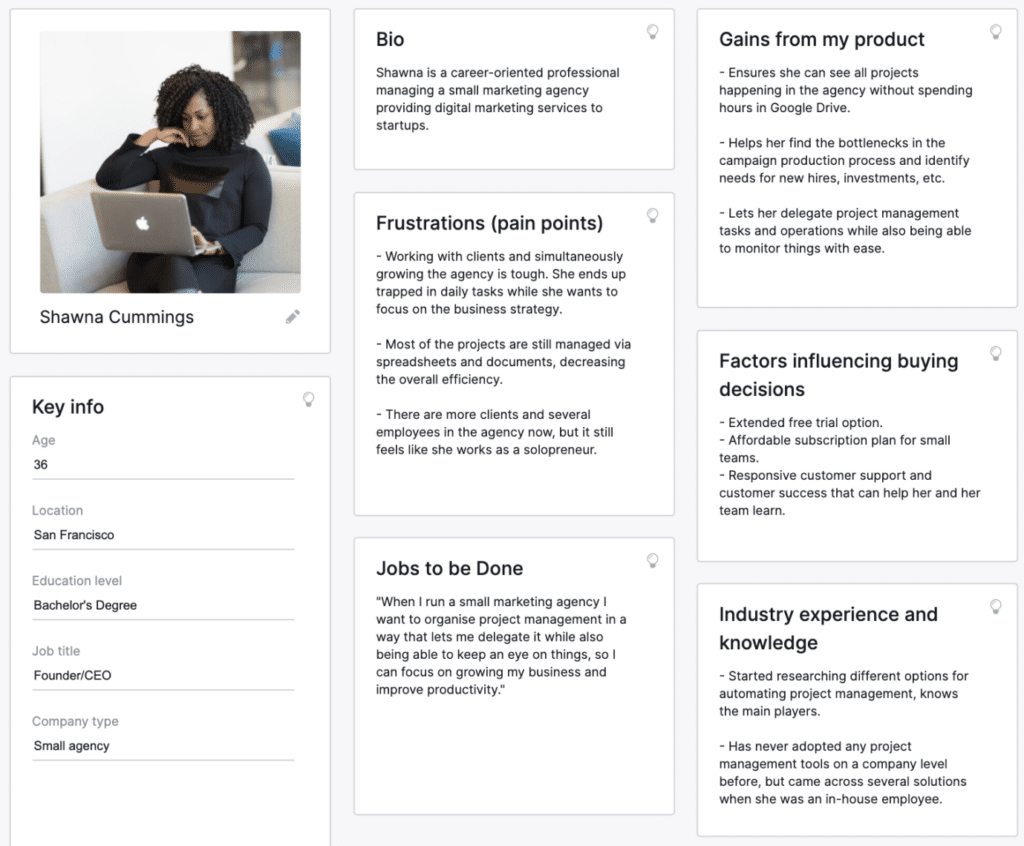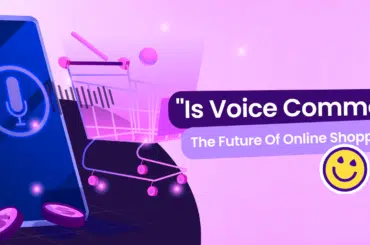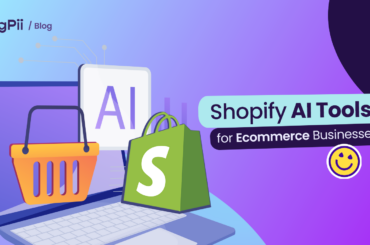In a world saturated with choices, standing out and capturing customers’ attention has never been more crucial. But fear not because the marketing funnel is here to save the day!
With its ability to guide customers seamlessly from the first touchpoint to making a purchase, the marketing funnel is a superhero in the realm of customer acquisition.
So, whether you’re a seasoned marketer or just dipping your toes into the business world, this guide will equip you with the knowledge and tools to build an effective marketing funnel.
What is a Marketing Funnel?
Marketing funnels are a powerful way to create an effective marketing strategy. They help you define a process that converts leads into customers.
Marketing funnels have many stages, but at the core of any marketing funnel lies the same basic steps:
Attracting leads — get people to visit your website or social media page.
Converting leads — convert those visitors into leads by offering them value through content or other means.
Qualifying leads — identify which leads are serious about buying your product or service and which ones aren’t.
Closing sales — turn qualified leads into paying customers.
Let’s discuss this with more context.
Prominent Stages of a Marketing Funnel
Awareness stage
It’s the first phase of the marketing funnel, where your goal is to capture the attention of your potential customers and make them aware of your brand.
At this stage, customers aren’t necessarily seeking a solution. That’s why, right now, your job is to create brand awareness and generate interest.
Two top ways to increase awareness include:
Content Marketing:
At this stage, the aim is to attract your target audience and make them aware of your brand or product.
One of the best ways to do that is by posting informative content on your blog, creating video content, or sharing social media posts that resonate with them.
For example, if you’re a fitness brand, you’d want to publish content like “Top 10 Exercises for Weight Loss” or create videos demonstrating workout routines.
To bring these videos to life and make them more engaging, a capable movie editor is essential.
A movie editor allows you to trim and arrange clips, add transitions, overlay text and graphics, adjust colors and audio, and apply special effects, giving your fitness videos a polished and professional look that resonates with your target audience.
Social Media Marketing:
You can also leverage Facebook, Instagram, Twitter, or LinkedIn to reach a wider audience and share promotions or provide a behind-the-scenes glimpse of your brand.
For example, a fashion retailer could run a social media campaign showcasing their latest collection with relevant hashtags.
Other ways to build awareness include:
- Appearing on podcasts
- By posting ebooks and whitepapers
- Webinars
- Infographics
- In-person events
Interest stage
Congrats, you’ve been successful in catching your potential customer’s attention.
However, now you have to create content to nurture and enhance their curiosity and encourage further exploration.
At this stage, customers actively seek information, compare options, and consider potential solutions.
Here are some ways to entice customers during the interest stage:
Lead Magnet:
Now that potential customers have taken note of your brand, it’s time to push them further down the funnel by offering incentives in exchange for contact information.
You could offer free ebooks, whitepapers, or exclusive discounts to capture leads and continue the nurturing process.
Search Engine Optimization (SEO):
Optimize your website and content to rank higher in search engine results, making it easier for potential customers to find you when actively searching for related information.
For example, an e-commerce store selling organic skincare products could optimize its website for keywords like “natural skincare routine” or “organic skincare products.”
Other options include:
- Offering free trial
- Running email campaigns
- Retargeting campaigns
- Chatbots
Desire stage
With the Desire stage, you’re in the middle of the marketing funnel. Potential customers are showing interest in your product, and now you have to work on creating a strong desire for that product.
This stage is where you showcase the unique value proposition of your offerings to show how your solution can fulfill their needs or solve their problems.
Some ways to entice customers in the Desire stage include:
Testimonials and Reviews:
The best to encourage leads sitting on the fence about making a purchase is by sharing how you’ve already helped people like them. You can do this by sharing customer testimonials, case studies, or positive reviews that highlight the benefits and positive experiences of using your product.
For example, FigPii has testimonials and case studies from their existing customers dotted on their landing page.

Influencer Marketing:
Influencer marketing is another way of building social proof and making your target audience desire your products. It involves collaborating with industry experts who align with your brand values and have a significant following in their niche.
When their legion of dedicated followers sees their favorite influencers using or endorsing something, it will most likely generate trust.
A beauty brand could partner with popular beauty bloggers or YouTubers to review and promote their products to loyal followers.
Action stage
Finally, you’re at the action stage of your marketing funnel, where potential customers make a purchasing decision and take action.
It involves converting leads into paying customers by providing a compelling call-to-action to nudge them to take the desired action.
Here’s what you can do to prompt action:
Run Limited-Time Offers:
Everyone loves freebies and discounts, making them a solid way to turn leads into paying customers. To make your offers even more effective and encourage customers to make the decision sooner rather than later, create a sense of urgency by offering time-limited promotions or exclusive deals.
For instance, if you’re an online retailer, you can run a flash sale with a countdown timer. To further nudge your customers into making a decision, you can also offer a 24-hour discount on select products.
Simplified Checkout Process:
With massive competition in the online market, not many customers will bother to deal with a complex checkout process. So, ensure your checkout process is user-friendly and has minimal steps and clear instructions.
The fewer steps and friction it has, the easier it will be for your customers to complete their purchases.
To make things simple, you could offer guest checkout options, autofill shipping details, and multiple payment options.
Creating an Effective Marketing Funnel
1. Identifying your target audience
Identifying your target audience is one of the most important steps when creating a marketing funnel.
How else would you tailor your marketing campaigns to acquire customers unless you understand who exactly your target audience is? You’ll have to pay attention to the demographics, characteristics, and preferences of your ideal customers.
But how do you go about that? Through market research.
Here are some tips that can help you perform market research to identify your target audience:
Surveys and questionnaires:
Surveys will help you gather information about your existing customers as well as your target audience. You can further ask questions to gauge their demographics, interests, purchasing habits, and pain points.
Social media listening:
As of January 2022, there are 4.9 billion active social media users worldwide.
Clearly, a major chunk of your audience is most likely using social media to share their lives, needs, and problems. And that’s where social media listening comes into the picture.
It involves monitoring conversations and interactions on social media related to your industry or niche. To do that, you’ll have to pay attention to the challenges, needs, and preferences expressed by your target audience.
For instance, in 2019, L’Oréal wanted to improve its L’Oréal Paris Alliance Perfect foundation as the formula and the product communication were both out-of-date.
The marketing team combined two research techniques: social media listening and traditional questionnaires.
Thanks to their market research efforts, the team found out that customers appreciated the features of the foundation, like not clogging pores, not spreading, and having a light texture. They also discovered that the most discussed and valued cosmetics component was hyaluronic acid.
All these revelations helped them create better content for their marketing funnel.
Competitor analysis:
Competitor analysis is a major part of market research efforts. It can help you study your competitors’ customer base and identify overlapping or untapped segments.
While at it, don’t forget to analyze their marketing strategies to see what’s working and might not.
Website analytics:
When you analyze how your existing customers are behaving on your website, you’ll have a better idea of your target audience’s needs and wants. Look out for specific patterns and trends that can help define your target audience.
Pro Tip: You can utilize web analytics tools and user research tools to understand your website visitors’ behavior, demographics, and interests.
Developing buyer personas:
Once you follow all the above ways to identify your target audience, the next step is to develop buyer personas.
An effective buyer persona is a perfect combination of:
- Demographic information: Define the age, gender, location, income level, occupation, and other relevant demographic details of your target audience.
- Psychographic information: Understand the values, interests, hobbies, lifestyles, aspirations, and pain points of your target audience. What motivates them? What are their challenges?
- Behavioral information: Identify the purchasing behavior, preferred channels of communication, and interactions with similar products or services.
Here’s an example of a buyer persona of Shawna Cummings from a B2B company that offers a project management tool.
(Source)
It includes key information about Shawna, including her age, location, job title, educational level, and type of company. If you want to create content that caters to your audience’s needs, don’t forget to include vital information like customers’ industry knowledge and experience in your personas.
2. Developing a compelling offer
Once you have identified your target audience, the next step is to develop a compelling offer that addresses their specific needs and desires. Your offer should provide value and differentiate your brand from competitors.
To develop an offer your target customers won’t be able to refuse, you’ll first have to understand their pain points and needs.
Use surveys and interviews to engage with your target audience directly to gain insights into their needs, desires, and expectations. You can also ask open-ended questions to uncover their pain points and desires.
And once you’re privy to their needs, craft an offer they can’t resist.
Start by defining the unique value proposition of your product.
Next, you can use these tips to create an irresistible offer:
- Make sure the offer is relevant to your target audience.
- Make it easy for people to take action now, so they don’t procrastinate and put it off until tomorrow or next week.
- Give people multiple ways to consume the information (video, audio, text) so they can choose how they want to consume it.
- Offer additional incentives like discounts, bonuses, free trials, or exclusive content to make your offer more compelling.
For example, look at this sales promotion example from ActiveSkin.
(Source)
The brand offers a time-limited offer to save 15% on some products and tempts viewers, helping them drive urgency.
3. Building a lead generation system
As a small business owner, you want to get as many leads as possible. You also want to convert those leads into customers.
A lead CRM software can help you bring qualified leads and increase the number of sales you make.
Here’s a list of some of the most effective lead-generation tactics:
- Content marketing: It includes creating high-quality content, including blog posts, videos, ebooks, or infographics, that provide value to your target audience. You can offer this content in exchange for their contact information.
- Landing pages: Design dedicated landing pages that highlight the benefits of your offer and include a CTA to encourage visitors to provide their information.
For example, the marketing agency Carney generates leads by using an attractive landing page with an actionable CTA and a short opt-in form.
Source
Here’s another example of a good landing page from Gravity Payments. Notice how it speaks clearly and directly to the target audience, building a sense of trust.
(Source)
- Social media marketing: Leverage social media platforms to promote your offers and drive traffic to your landing pages. Engage with your audience, participate in relevant conversations, and utilize targeted advertising.
- Webinars or online events: Host webinars or online events on topics of interest to your target audience. Add short forms for registration to collect lead information.
- Lead magnets: You can create valuable, exclusive content like guides, templates, checklists, or exclusive industry reports and offer them in exchange for contact information.
- Referral programs: Encourage your existing customers to refer their friends, colleagues, or contacts by providing incentives like discounts or rewards.
- Paid advertising: Utilize online advertising platforms, such as Google Ads or social media ads, to target your ideal audience and drive traffic to your landing pages.
4. Nurturing leads through effective communication
It’s not time to nurture those leads you generated.
In fact, the most effective marketing funnels are driven by nurturing. The goal of nurturing is to keep your audience engaged with you and your brand in a way that optimizes their experience and builds trust.
It’s important to note that nurturing has nothing to do with selling. It’s all about building relationships with your customers and nurturing them through their purchase journey until they become repeat customers.
One way to do that is through email marketing campaigns.
Here are some ways to use email marketing to nurture leads:
- Send reminders about special promotions or offers (e.g., discount codes).
- Send personalized emails welcoming new customers, thanking them for their purchase, or asking them if they need help with something specific (e.g., installation support).
- Use mobile-friendly templates so that your emails look good on smartphones and tablets too.
- Set up automated drip campaigns to deliver a series of relevant and valuable emails to nurture leads over time.
- Ensure every email contains value for the recipient – whether education or entertainment.
Here’s an example of a lead-nurturing email from Sephora that incorporates a captivating video with educational content and product offerings, adding an enjoyable touch to the communication.
(Source)
Another major aspect of lead nurturing through email marketing is using personalization and segmentation techniques. Segmenting your audiences into identical groups will help you tailor your communication to the specific needs and interests of your leads, increasing engagement and conversion rates.
You can segment your audience by:
- Demographics: This involves dividing leads based on age, gender, location, or income.
- Behavior: This involves categorizing leads based on their actions and interactions with your brand, including website visits, email opens, or product downloads.
- Interest: Here, you’ll group leads according to their preferences or how they engage with your brand, allowing you to deliver offers and content based on their interests.
For instance, Avocode targets its segment of young students with an enticing discount that ends just prior to the beginning of the new school year.
Additionally, make sure you’re personalizing your email marketing campaigns by including the recipient’s name and referencing past purchases or interactions.
For example, instead of sending a generic email blast, you could personalize emails by recommending similar products based on the customer’s past purchases or browsing history.
5. Converting leads into customers
Finally, all your efforts will come to fruition once you manage to turn your qualified and nurtured leads into paying customers.
After all, converting leads into customers is the ultimate goal of any marketing funnel.
At the core of this is the lead scoring process.
For the uninitiated, lead scoring entails focusing on leads that are most likely to convert.
You can assign scores based on user engagement, demographics, behavior, and purchase intent. This way, your sales team will know where to allocate most resources to concentrate on the highest quality leads.
Once you identify your highest-quality leads, the next step should be sending personalized follow-ups.
Again, don’t forget to address the needs and interests of each lead by:
- Referencing previous interactions
- Address their pain points
- Providing tailored solutions
You can also combine your personalized email campaign with time-limited discounts, promotions, free trials, samples, and special offers – further nudging your leads to make a purchase.
6. Analyzing and Optimizing Your Marketing Funnel
Now that you’ve set up your marketing funnel and turned it into a lead generation and sales generation machine, it’s still not the time to sit back and relax.
It’s safe to say that maintaining a marketing funnel is a continuous process.
Once everything’s set up, you still have to retain your customers and inspire loyalty – and generate more sales, of course.
That’s why there’s a lot of emphasis on continuously analyzing and optimizing your marketing funnel.
Here’s an overview to help you optimize your marketing funnel to fine-tune it to retain customers and drive more sales:
Start by setting up key performance indicators (KPIs):
First and foremost, you’ll have to determine the key metrics that align with your marketing goals and objectives.
Simply put, what are your goals?
Is it to increase conversion rates? Or lead-to-customer ratio? Average order value? Customer acquisition cost?
Once you identify your KPIs, set up tools to measure and track them consistently.
Luckily, there are tons of analytics platforms to help you gather data and monitor the performance of your marketing funnel.
Analyze funnel performance:
Next, analyze each stage of your marketing funnel to identify any bottlenecks or areas where leads drop off or fail to convert.
Look for metrics like high bounce rates on landing pages or low click-through rates on CTAs, and pinpoint the potential causes.
Again, use analytics tools to gain deeper insights into user behavior, customer journeys, and engagement metrics.
To get a visual picture of your funnel performance, use heatmaps, click tracking, and user session recordings. This will give you a better understanding of how users interact with your website and identify pain points or areas of confusion.
For your reference, we did an in-depth review of the best heat map and session recording tools here.
A/B testing:
How can we leave out A/B testing when talking about optimization?
We suggest conducting A/B tests to experiment with different variations of your marketing assets, including:
- Landing pages
- CTAs
- Email subject lines
- Ad creatives.
Test one element at a time to isolate variables and measure the impact of each change.
Pro Tip: Use all-in-one conversion optimization tools like FigPii that have features for heatmaps, session recordings, and A/B testing – all combined in one platform. This will help you mitigate the confusion of using multiple optimization tools.
Finally, implement the changes based on testing results and iterate on your strategies continuously to improve your funnel’s performance.
The Funnel Finale: Unleashing Your Marketing Superpowers!
In today’s competitive business landscape, having a well-designed and effective marketing funnel is essential for driving customer acquisition and business growth.
By following the strategies outlined in this guide, including nurturing leads, converting them into customers, and continuously analyzing and optimizing performance, businesses can create an effective marketing funnel.
Implement these insights to engage your target audience, achieve marketing goals, and foster sustainable growth. And remember to monitor and refine your funnel regularly to stay relevant in the ever-changing market.










